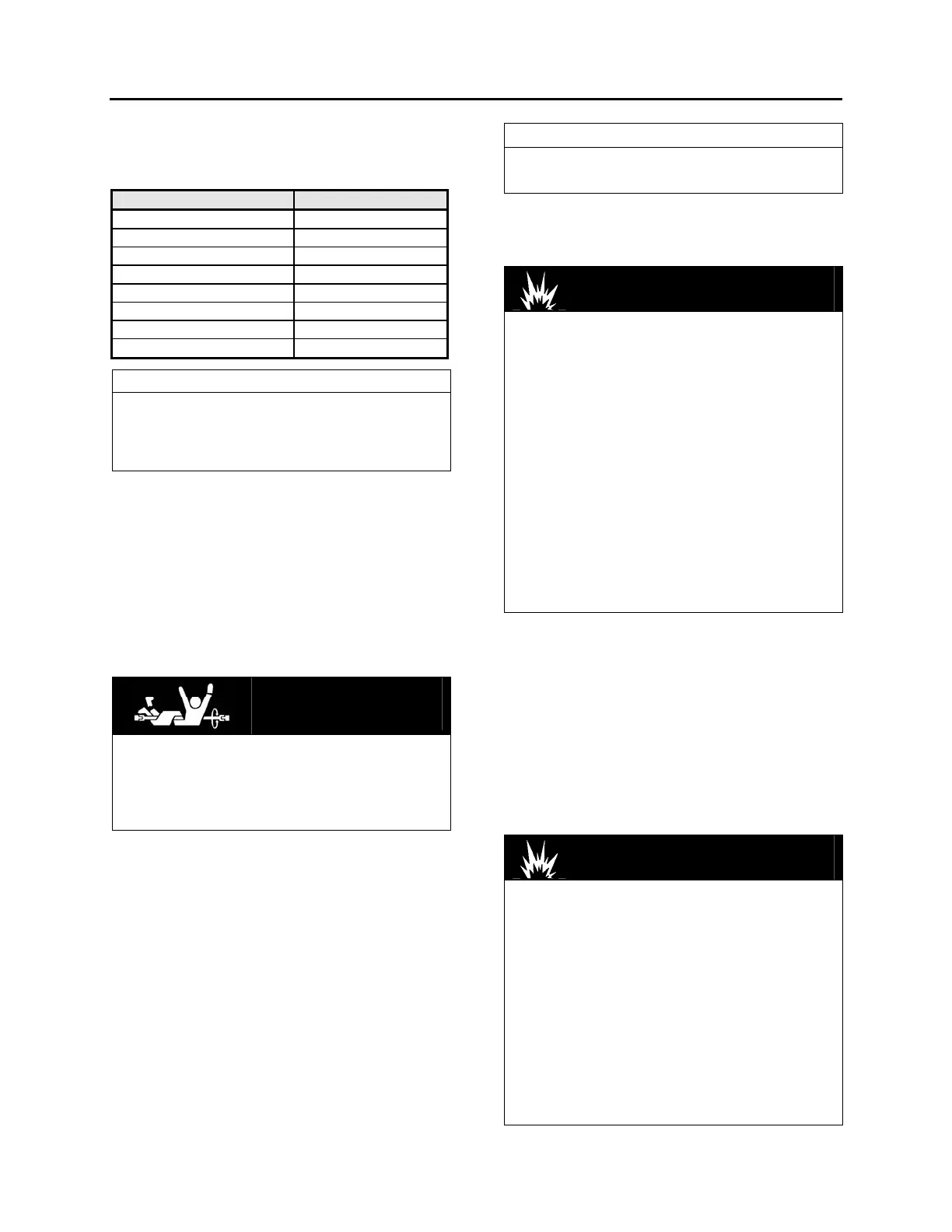Section 06: ELECTRICAL
PA1562
17
temperatures below 70ºF (21ºC), refer to the
following "Voltage and Temperature Chart".
Voltage and Temperature Chart
Ambient Temperature Minimum Voltage
70ºF (21ºC) and above 9.6
60ºF (16ºC) 9.5
50ºF (10ºC) 9.4
40ºF (4ºC) 9.3
30ºF (-1ºC) 9.1
20ºF (-7ºC) 8.9
10ºF (-12ºC) 8.7
0ºF (-18ºC) 8.5
NOTE
The accuracy of this test procedure is
dependent upon close adherence to the
proper load, time and temperature
specifications.
3.5.4 Testing Battery Cables
Check all cable ring terminals and connections
to determine if they are in good condition.
Excessive resistance, generally caused by poor
connections, produces an abnormal voltage
drop which may lower voltage at the starter to
such a low value that normal operation of the
starter will not be obtained. An abnormal voltage
drop can be detected with a low-reading
voltmeter as follows:
DANGER
To prevent the engine from starting during
these tests, remove fuses F78 and F79
located in the VECR of the rear electrical
compartment. Once the tests are completed,
reinstall F78 and F79.
1. Check voltage drop between grounded
(negative) battery terminal and vehicle
frame by placing one prod of the voltmeter
on the battery terminal and the other on a
good ground (unpainted surface) on the
vehicle. With the starter cranking the engine
at a temperature of 70ºF (21ºC), voltage
reading should be less than 0.3 volt. If the
voltage reading exceeds 0.3 volt, there is
excessive resistance in this circuit.
2. Check voltage drop between the positive
battery terminal and the starter positive
terminal stud while the motor is operated. If
the reading is more than 2.5 volts, there is
excessive resistance in this circuit.
NOTE
If it is necessary to extend the voltmeter lead
for this test, use a #16 (AWG) or larger wire.
3. Check voltage drop between the starter
housing and a good ground on the vehicle.
The reading should be less than 0.2 volt.
DANGER
Any procedure other than the following could
cause personal injury or damages to the
charging system resulting from battery
explosion or electrical burns.
Wear adequate eye protection when working
on or near the batteries. Ensure that metal
tools or jumper cables do not contact the
positive battery terminal (or a metal surface in
contact with it) as a short circuit will result. Do
not attempt to jump start a vehicle suspected
of having a frozen battery because the battery
may rupture or explode. Both the booster and
discharged batteries must be treated carefully
when using jumper cables. Follow exactly the
procedure outlined later in this section, being
careful not to cause sparks.
3.6 BATTERY CHARGING
The batteries used on this vehicle can be
charged either on or off the vehicle; however,
when they are removed from the vehicle, it is
recommended that an adapter kit, which is
available from any "A/C DELCO" dealer, be
used in charging sealed-terminal batteries. Use
the booster block to charge the batteries when
they are left on vehicle and make sure that the
main battery disconnect switch is set to the
“On” position.
DANGER
During charging of the batteries, an explosive
gas mixture forms in each cell. Part of this gas
escapes through the vent holes and may form
an explosive atmosphere around the battery
itself if ventilation is poor. This explosive gas
may remain in or around the battery for
several hours after it has been charged.
Sparks or flames can ignite this gas causing
an internal explosion, which may shatter the
battery.
1. Do not smoke near a battery which is
being charged or which has been recently
charged.

